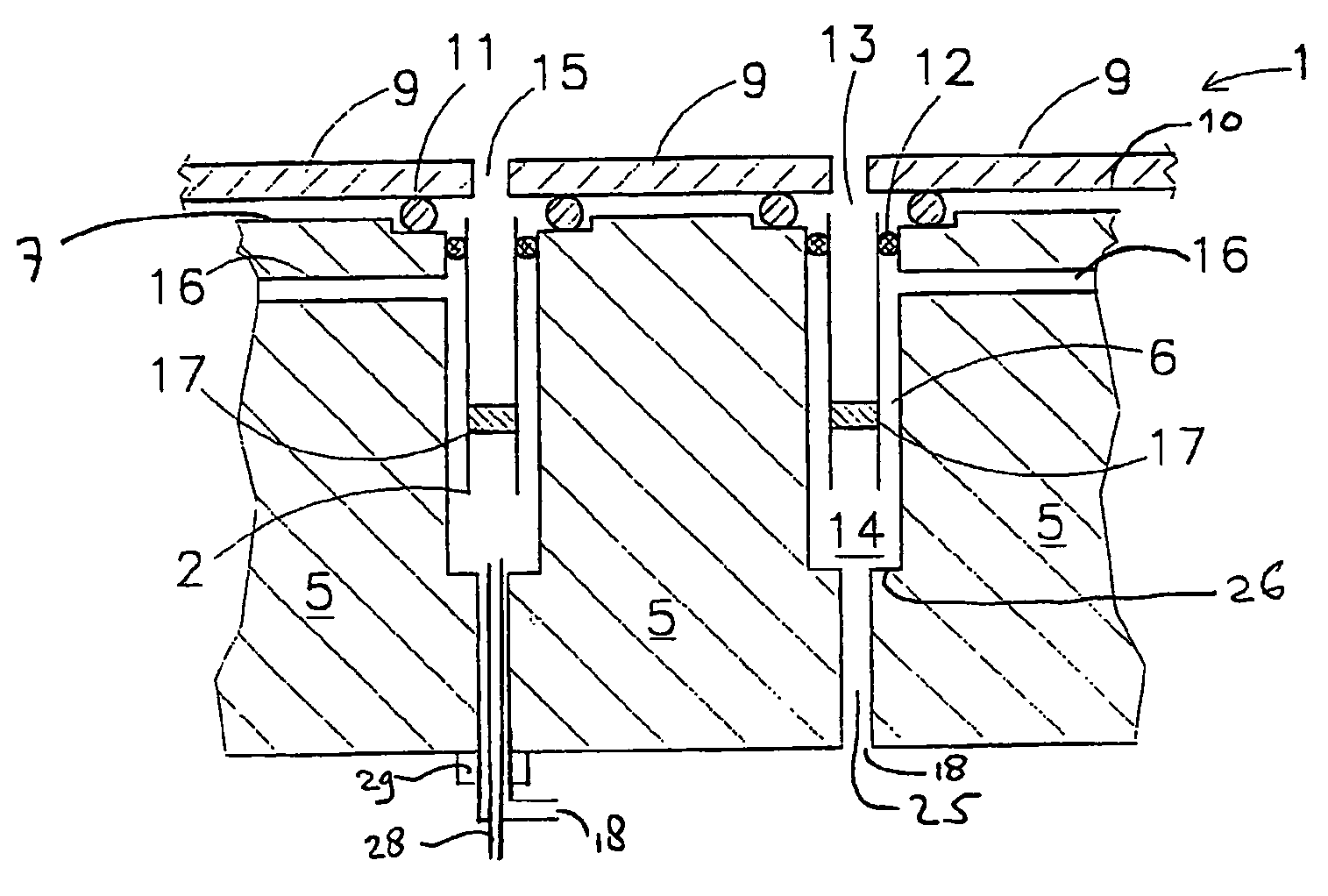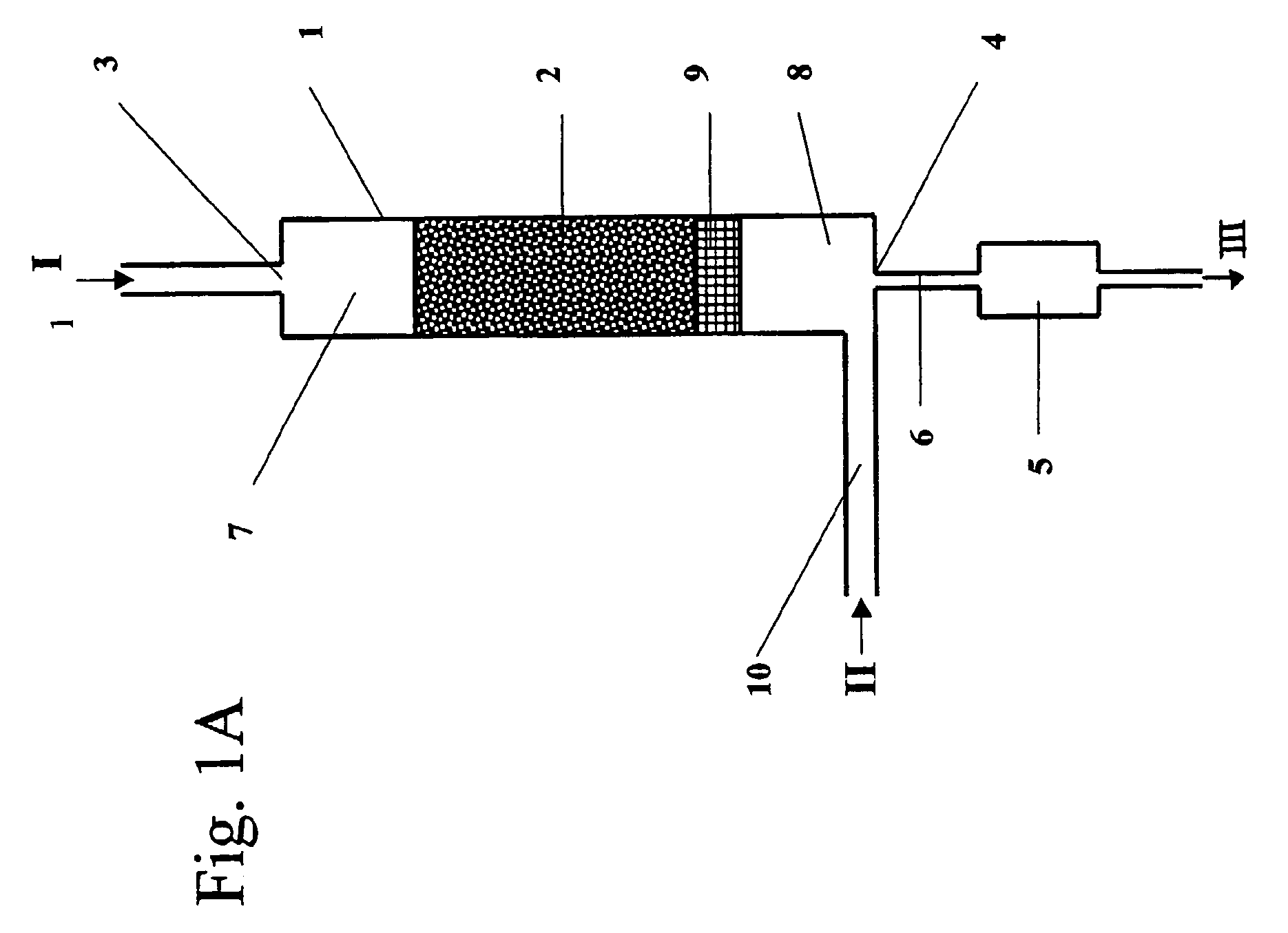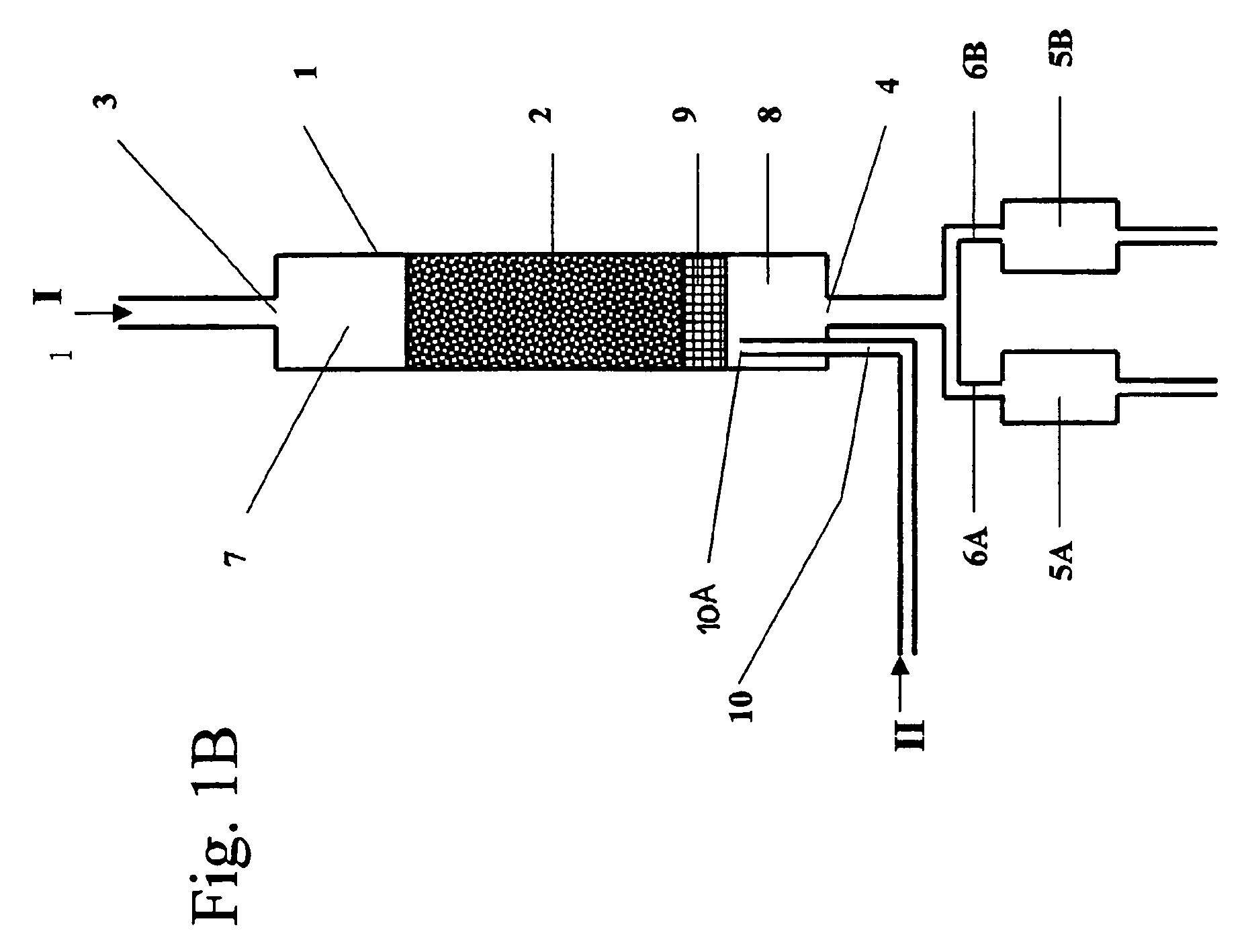Reactor assembly
a technology of assembly and reactor, which is applied in the direction of gas-gas reaction process, laboratory glassware, instruments, etc., can solve the problems of increasing the difficulty of analysis accuracy, increasing the difficulty of analyzing the composition of the effluent stream, and many problems, so as to increase the volume of fluid, increase the efficiency of the gas liquid separator, and reduce the effect of aging
- Summary
- Abstract
- Description
- Claims
- Application Information
AI Technical Summary
Benefits of technology
Problems solved by technology
Method used
Image
Examples
examples
[0134]The reduction of 3-hexen-2-on to 3-hexen-2-ol was performed both in gas phase as in trickle flow mode. A fixed reaction pressure of 10 bar and a reaction temperature of 100° C. was chosen in both cases. The saturated vapour pressure of 3-hexen-2-ol at 100° C. is approximately 20 kPa and at 25° C. it is 0.3 kPa.
Example: 1 Reduction of 3-hexen-2-on to 3-hexen-2-ol in the Gas Phase
[0135]The reactor set-up as shown in FIG. 1e and FIG. 7 without however the presence of a gas / liquid separator and a liquid analyser. The equipment was equipped 64 reactors in parallel with one GC.
[0136]A library of heterogeneous catalysts with a wide variation in chemical composition was loaded in the reactors. The amount of catalyst was 100 μg per individual reactor. 5 Nml / min / reactor (0.2 mmol / min / reactor) of hydrogen gas and 0.004 mmol / min 3-hexen-2-on liquid feed was fed to each reactor. Thus the gas in the reaction zone may just consist of 2 v % 3-hexen-2-ol.
[0137]The reaction mixture flowing out ...
example 2
of 3-hexen-2-on to 3-hexen-2-ol in the Trickle Phase
[0139]By adding significantly more 3-hexen-2-on the majority of the reactant will remain in the liquid phase, causing the reactant to trickle through the catalyst bed. The term “trickle phase” means that a mixture of gas and liquid is fed to a reaction zone, wherein the liquid passes (trickles) through the said zone by gravity force. In this experiment a 3-hexen-2-on feed of 0.083 mmole / min / reactor (20 times more then in the preceding example) was used. To the outlet of each reactor di-isopropylether diluent was added at 100 mg / min / reactor using a pump and a distributor with capillaries. The diluent contained 0.0.085 mole % of hexadecane internal standard. The hexadecane flow rate was 0.83 micromole / min. To the liquid reactor feed also 1 vol % heptadecane was added as an internal standard. This internal standard together with the hexadecane standard allows us to monitor the ratio of the reactant flow rate and the diluent flow rate ...
PUM
| Property | Measurement | Unit |
|---|---|---|
| gas flow rate | aaaaa | aaaaa |
| gas flow rate | aaaaa | aaaaa |
| diameter | aaaaa | aaaaa |
Abstract
Description
Claims
Application Information
 Login to View More
Login to View More - R&D
- Intellectual Property
- Life Sciences
- Materials
- Tech Scout
- Unparalleled Data Quality
- Higher Quality Content
- 60% Fewer Hallucinations
Browse by: Latest US Patents, China's latest patents, Technical Efficacy Thesaurus, Application Domain, Technology Topic, Popular Technical Reports.
© 2025 PatSnap. All rights reserved.Legal|Privacy policy|Modern Slavery Act Transparency Statement|Sitemap|About US| Contact US: help@patsnap.com



